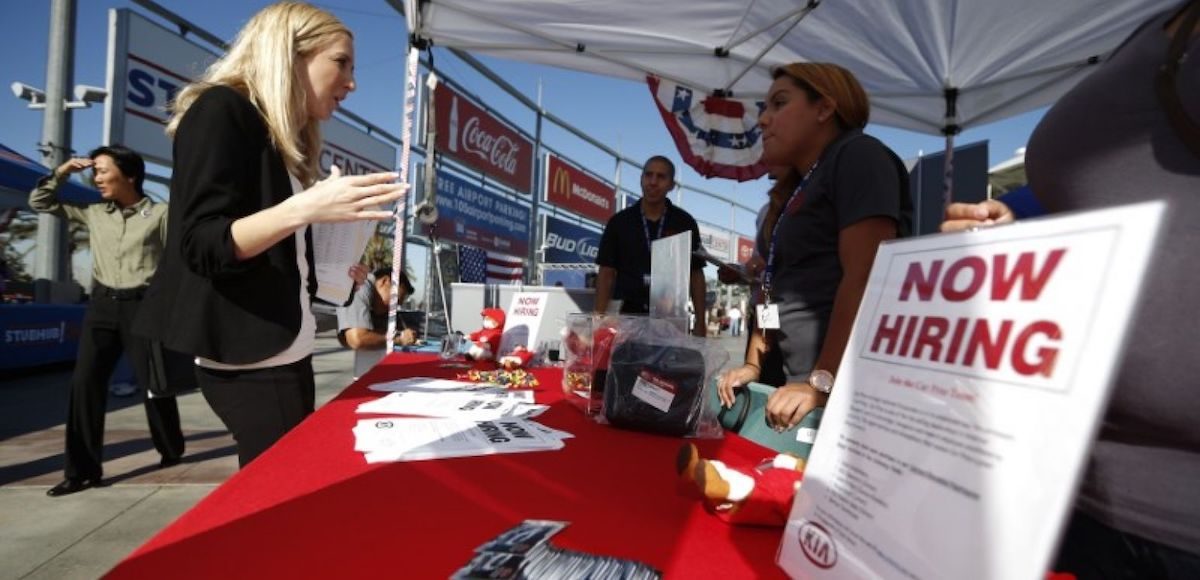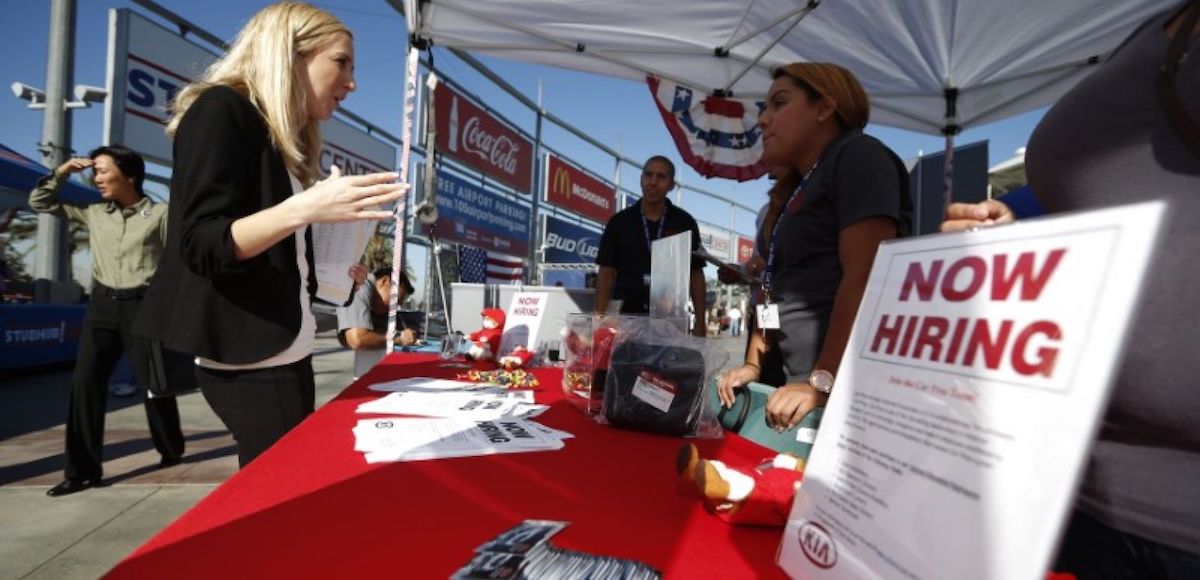

People browse booths at a military veterans’ job fair in Carson, California October 3, 2014. (Photo: Reuters)
The U.S. economy created 157,00 jobs in July and the unemployment rate fell to 3.9%. While the consensus forecast was calling for 190,000 jobs to be added to the payrolls last month, the unemployment rate matched its consensus forecast.
However, Labor Department (DOL) via the Bureau of Labor Statistics (BLS) said upward revisions to the change in nonfarm payrolls for the previous two months resulted in a combined additional 59,000 jobs than initially reported.
“While the July non farm payroll gains were a bit shy of expectations, combined upward revisions for May and June are very encouraging,” said Tim Anderson, an analyst at TJM Investments. “Revisions always give us a good look at which direction data is trending.”
The unemployment rate among Hispanics fell to a new all-time low of just 4.5%, beating out the previous low of 4.6% measured in May 2018. though among African Americans it ticked up to 6.6% after also hitting an all-time low. Until May, the 3.9% unemployment rate was the lowest since December 2000.
The U-6 alternative unemployment rate fell to 7.5%, down from the previous low of 7.8% also measured in May. That’s the lowest U-6 rate since May 2001, and a clear indication the U.S. economy has reverted back to a full-time economy, rather than a part-time.
Manufacturing continued its recent upward trend under the Trump Administration after struggling on life support during the heavily-regulated period of recovery.
The manufacturing sector added a solid 37,000 jobs in July, with most of the gain coming from the durable goods component. Employment rose in transportation equipment (+13,000), machinery (+6,000), and electronic instruments (+2,000). Over the past 12 months, manufacturing has added a whopping 327,000 jobs.
Construction employment also continued on an upward trend, adding 19,000 jobs in July. Employment in the construction sector has increased by 308,000 over the year.
The average workweek for all employees on private nonfarm payrolls fell slightly by 0.1 hour to 34.5 hours in July, matching the consensus forecast. That follows a 0.1 hour increase in June.
In July, average hourly earnings for all employees on private nonfarm payrolls rose by 7 cents to $27.05, matching the consensus forecast. Over the year, average hourly earnings have gained by 71 cents, or 2.7%. That also matched the consensus forecast.
Average hourly earnings of private-sector production and nonsupervisory employees increased by 3 cents to $22.65 in July.
The government jobs report, also known as the Employment Situation, stands in contrast to the report on private sector job creation released earlier this week. The ADP National Employment found the U.S. private sector added 219,000 jobs for the month of July.
The payroll processor’s report, which is derived from actual payroll data, measures the change in total non-farm private sector employment each month on a seasonally-adjusted basis. It precedes the government jobs report, which tallies both the private and public sectors.
However, the initial government jobs report is derived from responses collected in a household survey, not hard data.
Mr. Anderson stressed how trends are particularly important for data in the BLS jobs report, “which gets most of its initial input from surveys, followed by revisions from hard data for the prior 2 months.”
“When you compare BLS coming in at 30,000 shy of the consensus and the ADP private sector job gains coming in 35,000 above on Wednesday, keep in mind that ADP tabulates their report from ‘hard data,’ while BLS gets most of its initial input from surveys,” Mr. Anderson added. “That is followed by revisions as real data comes in.”
“In light of the strong upward revisions in recent reports, it wouldn’t be surprising to see today’s report revised higher over the next couple months.”





